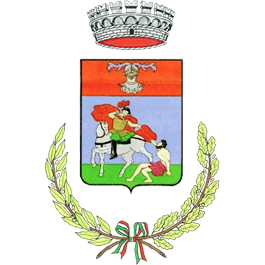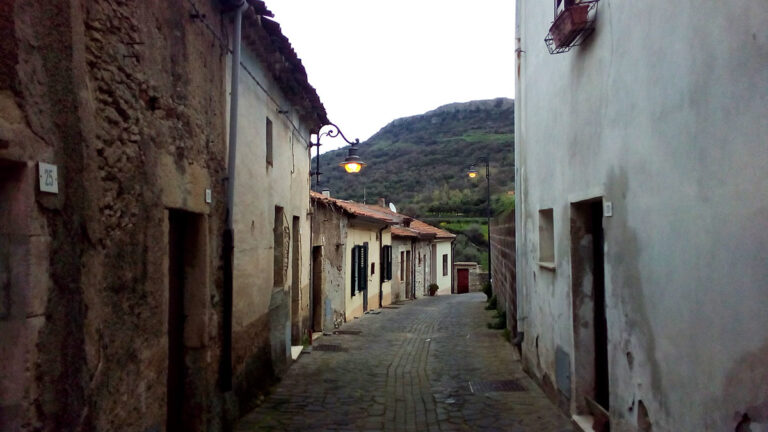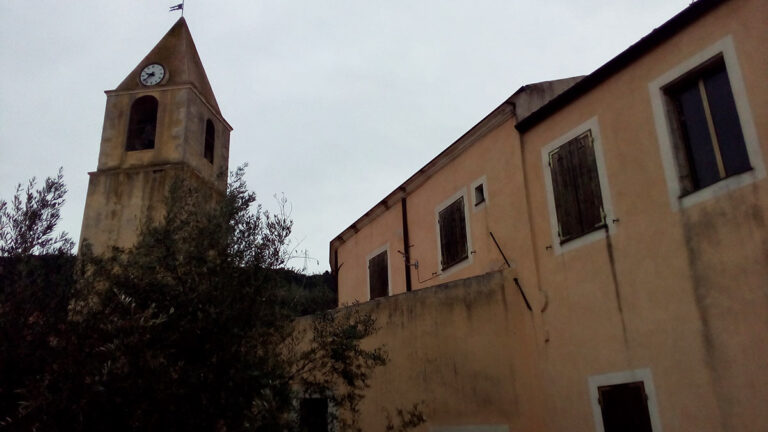
Bessude
Bessude settlement initially appears in documents from the Condaghe di San Pietro di Silki in the eleventh and thirteenth centuries, when a Mical de Bessute is mentioned. The town centre grew up around the church of San Leonardo, and the Rationes Decimarum (a 14th-century document describing the Church’s tithe collection) makes many references to the town centre among the parishes of the Diocese of Sorres.
Up until 1272, when it was included into their lordly kingdom as a town, the Dorias privately owned it as a portion of the curatoria of Capuabbas, in the Judicial Kingdom of Torres. It was incorporated into the newly established Kingdom of Sardinia and Corsica by 1323, and by 1383, it was a part of the Kingdom of Arborea instead.
Today, Bessude is a rural centre with an agro-pastoral economy; the town is divided into the more ancient part of the town and the more contemporary 'rione de sa Sea'.
Among the notable people who lived in Bessude were the notary Francesco Sotgiu Satta, who wrote the first “Act of concord and union” of the Marquisate of Monte Maggiore (Bessude, Cheremule, and Thiesi), the ecclesiastic Salvador Roig, Angioy’s associate, and the former Jesuit abbot Francesco Carboni, whom Angioy mentioned as being among the Sardinians “in favour of the cause of liberty”.
Saint Martin Parish Church
Built in the 17th century, the parish church of St. Martin is a genuine treasure trove of artwork, with the rare and irreplaceable 16th–17th century reproduction of the ancient Assumption figure and the altarpiece painted in 1632 by a painter connected to the Baccio Gorini group. Inside the temple lie the mortal remains of Francesco Carboni (1746–1817), a Jesuit scholar, poet, and author of significant Latin works.
As Carboni approached his fiftieth birthday in 1795, he abruptly left his prominent posts over unclear accusations of heresy, political ideas, and scandalous conduct.
After spending many months in the main towns on the peninsula, he travelled to Sardinia the same year and made his home in the village of Bessude. He had a period of happy isolation, literary indolence, and notable correspondence with notable Italian thinkers during this time.
Salvador Roig the Dean
Born in Ozieri, the aristocrat Salvador Roig first served as a parish priest in Nuoro in 1770. Later, he became the dean of the Turritan archdiocese chapter. The dean’s post was established in 1552 with the prebend, or ecclesiastical benefice, of Bessude. On his own money, he renovated the altarpiece of the San Martino parish church (1781).
Additionally, he associated his name with a number of church decorations, including bequests for the acquisition of holy garments and the casting of new bells He was administrator of the Diocese of Sassari and vicar general in the absence of Archbishop Della Torre, who was taken prisoner by Gioachino Mundula at the close of the 18th century upheavals. His many noteworthy accomplishments include helping to put a stop to the feudal lords of Sassari’s separatist uprisings, actively trying to prevent the persecution of vassals by their feudal lords and providing thirty cow heads and twenty wheat raisers during the French invasion in 1793.
A personal friend of Giommaria Angioy, he was exiled for 16 months for endorsing the leaders of the “Sardinian revolution,” and in 1816 the monarchy titled him Elemosiniere del Regno.
The Sotgiu Satta Household
In different Meilogu locales, he notarized hundreds of papers between 1780 and 1820. One of the most important of these is the first ‘Act of Concord and Union’, dated November 24, 1775, wherein the villages of the Monte Maggiore lordship asked to be freed from feudalism, both the fiefdom and the region as a whole.
Giving voice to the suffering people, Sotgiu Satta said that the locals were even ready ‘to pour their own blood as they would never be able to reach ultimate bliss and complete tranquilly’ in the absence of the baron caste’s abolition. Agostino Squintu, the vicar, Michele Spanu, the mayor of Bessudese, Antonio Luigi Salis, Antonio Maria Cabras, and Giovanni Manca, the prelates, all sign the document.
On November 9, 1800, he was captured between Padria and Pozzomaggiore while travelling to Cagliari with a gun in hand to deliver some messages he had purportedly delivered to some Jacobins.
He received a ten-year jail term.
The Saint Leonard Church
Built in the fourteenth century, the church was abandoned around 1620, at about the time the current parish church was being built. From then on, the church and the courtyard adjacent to it were repurposed into cemeteries.
The building’s excellent architectural attributes were revealed in 1950, and it received progressive restorations over the next few decades. The side aisles of the three-aisled church feature magnificent cross vaults, some of which are rib vaulted, and the nave is topped by a trussed roof.
Domo de sas Damas
The “de sas damas” home appears austere and sombre, but inside are genuine gems of rustic civilization, including spaces for cooking, baking bread, and weaving. A labyrinth of chambers typical of Sardinian noble mansions in the eighteenth century. The mediaeval Meilogu museum, or MUME, is currently housed in one wing of the palace.
Bibliography
Archivio di Stato di Sassari, Atti Notarili, copie, Sassari ville, 1796, vol. 1
V. Del Piano, Giacobini moderati e reazionari in Sardegna, Cagliari 1996
M. P. Derudas, Parco dei petroglifi. Uomo e paesaggio nella valle di Cheremule, Cagliari 2013
S. A. Tedde, Pabilos, la comunità di Bessude alla riscoperta della memoria, Thiesi 2011
S. Cuccureddu, Cheremule, Sassari 2012
Credits
A. Nasone, G. Ruggiu, S. A. Tedde



